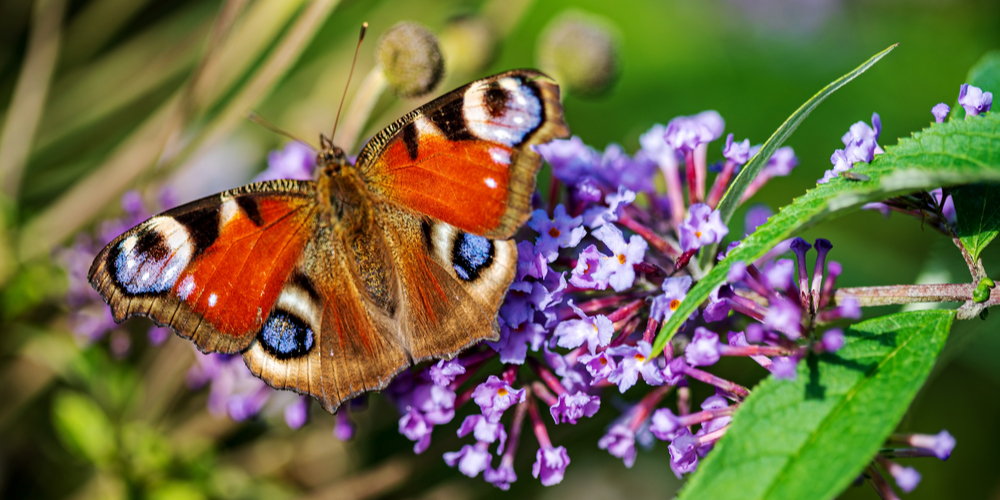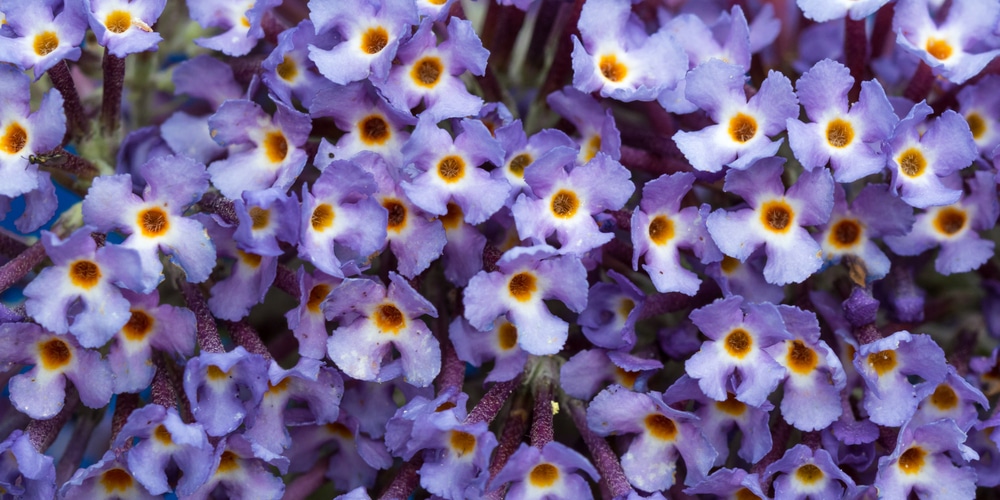Butterfly Bushes are stunning low-growing flowering shrubs that (true to their name) attract plenty of pollinators with their nectar. Adding them to your garden will make your yard lively: bees, hummingbirds, and butterflies won’t resist their scent.
But beware: for butterfly gardens, you’ll have to add species to your garden that support all stages of these insects’ life. Indeed, Butterfly Bushes only are a source of food for adult butterflies. They won’t lay their eggs on them, and larvae need other plants to survive.
With that said, butterfly bushes can make a statement in your yard with their colorful purple tube-like flowers. They adapt to various soil conditions and are not too fussy about soil. Under optimal circumstances, these plants will grow fast.
The Buttefly Bush is Aggresive and Invasive

Even if Butterfly Bushes are now a common sight, they do not come from North America. Instead, they are native to Asia, from where they traveled across the world and evolved in more than 100 species. The original species lives on mountain slopes, rocky stream beds, and forest clearings.
Today, thanks to their aggressive reproductive behavior and superior adaptability, butterfly bushes can even survive droughts. Most of the varieties are so hardy that they threaten the natural ecosystem.
Because of this, almost half of the United States has banned Butterfly Bushes. But what about North Carolina? In this “Butterfly Bush Invasive North Carolina” essential guide, you’ll learn everything you must know about growing this stunning (but dangerous) flowering shrub in the region.
What You Must Know About Growing a Butterfly Bush in North Carolina

As you can expect, taking care of Butterfly Bushes isn’t hard. What may take you more time is to control their spread. Indeed, when adding these plants to your garden, you must prune them annually to maintain their attractive shape and deadhead them.
Removing dead flowers will minimize the risk of these plants taking over your garden. Indeed, their flowers contain seeds that (if left on the ground) will quickly find their way to nutrients.
You might need to adjust your intervention depending on where you live. In the northern regions, these bushes tend to die back to the ground when the winter comes.
However, you will have to cut them to the ground every spring if you live in a part of the country where winters are milder. Don’t worry about overdoing it: butterfly bushes bloom on new wood and will get to a larger shape in just a few months. Also, pruning will stimulate new growth, enhancing flower production. If you want to make the most out of this plant, you shouldn’t skip pruning.
These plants will surprise you with abundant blooms even during their first year. While that might be a positive thing, don’t forget that you’ll have to keep an eye on their spread. Butterfly Bushes will quickly take over your garden if you allow them.
Don’t forget that these bushes grow into trees and develop rugged peeling trunks in warm climates, t. Don’t worry about the peeling: it is part of their growth cycle.
While North Carolina hasn’t officially banned Butterfly Bushes, adding them to the environment can cause a negative impact. It might alter the natural ecosystem by taking over native species that also are a source of food to beneficial pollinators.
You can find sterile cultivars developed to produce fewer seeds. With them, you’ll have less to worry about maintenance. Still, we recommend you consider planting native plants such as Sweet Pepperbush or Bee Balm. You can find flowering alternatives just as stunning as Butterfly Bushes (and almost as hardy).
Also, most of them serve as host plants for caterpillars too. Don’t forget that adding native plants won’t destroy the natural ecosystem and will save you some time in maintaining your garden. Milkweed, Yarrow, Black-Eyed Susan, and Columbine are other choices you must consider.
Butterfly Bush North Carolina: The Bottom Line
Butterfly Bushes are stunning plants. However, because they are non-native, they can cause severe damage to the ecosystem. In North Carolina, where these shrubs are not banned, they can cause trouble too.
Always try to plant native species to encourage the development of a healthy environment without intervening in the natural ecosystem. But if you wish to add Butterfly Bushes, don’t forget to keep an eye on its spread: prune them annually and deadhead flowers as soon as you notice them shriveling.
Related Article: How do Weeds Grow so Fast?